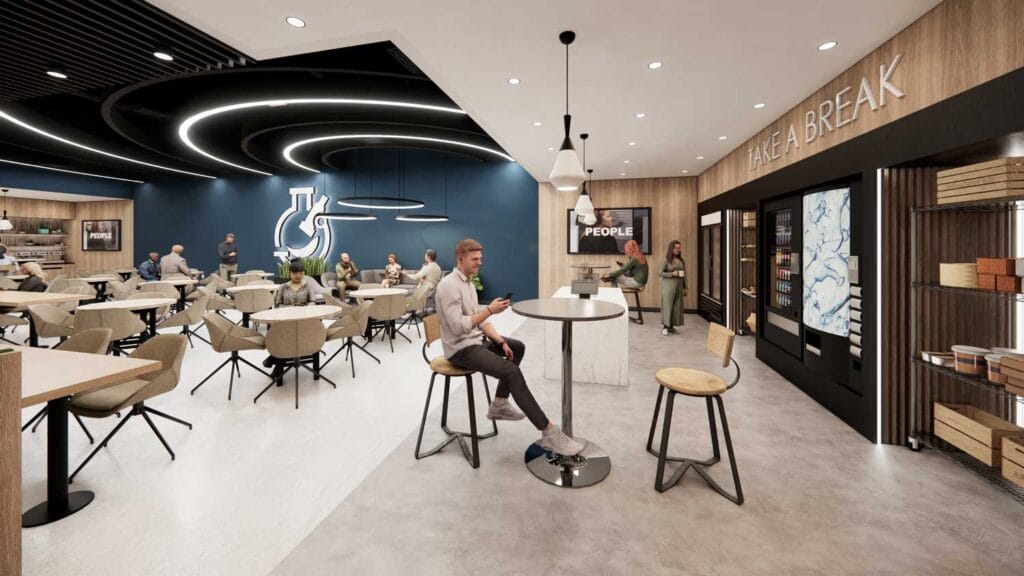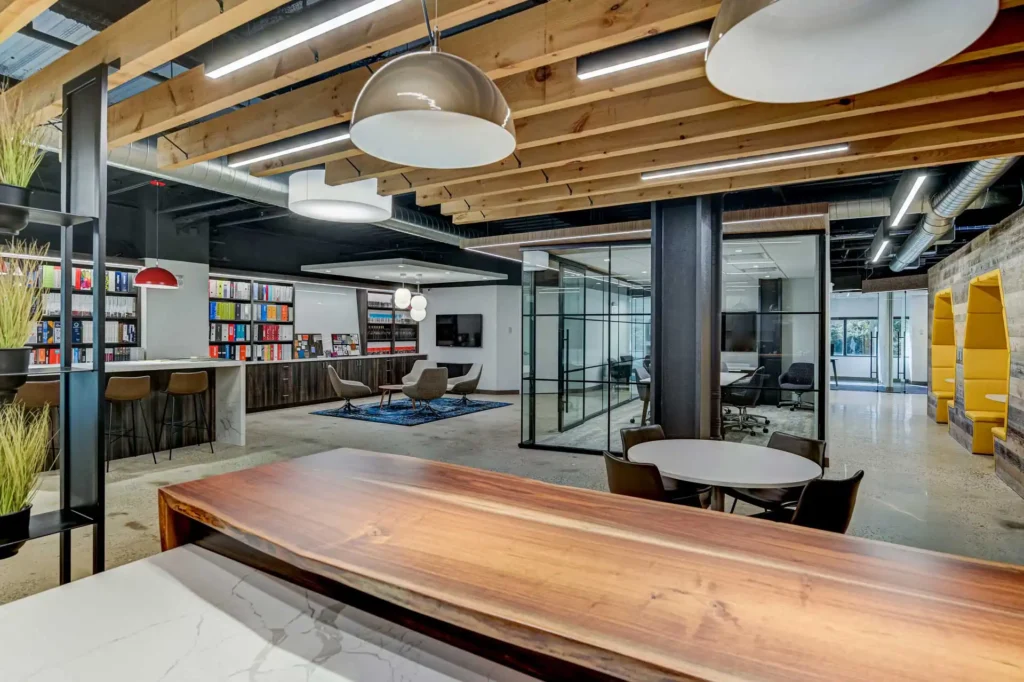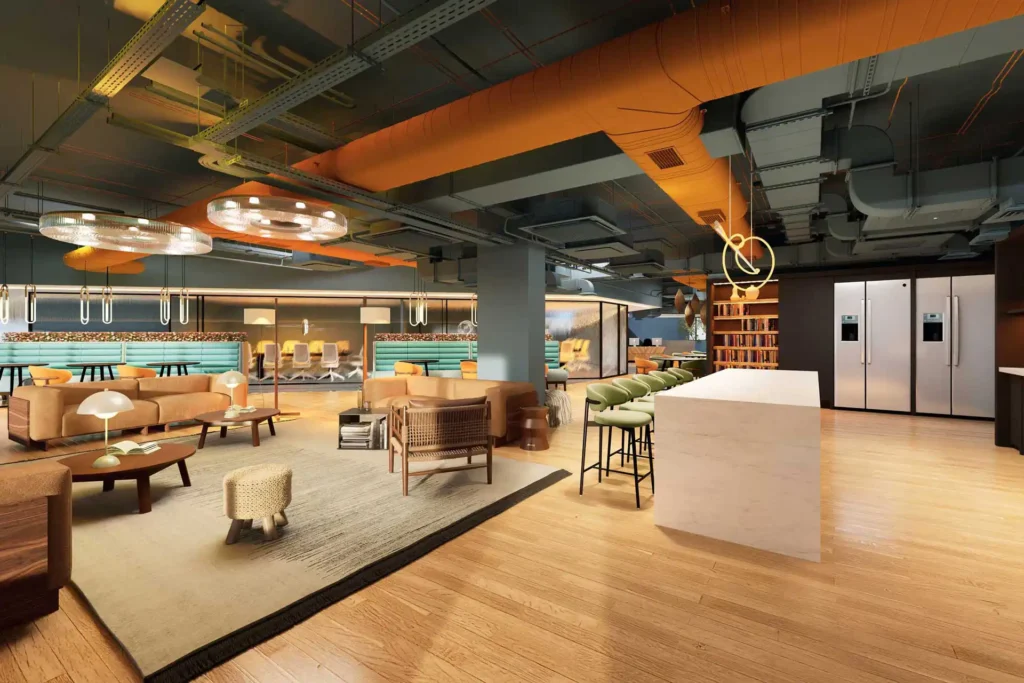
12 Nov 26 Workplace Design Trends and Ideas for 2026
With another year wrapping up, it’s time to look ahead. So what will the office of 2026 look like? What do busy CEOs need to keep an eye on, and which workplace design trends, team culture shifts, and technology changes will shape the way we work next year?
AI is now part of everyday life, hybrid working has settled in, and people’s expectations of where and how they work continue to evolve. Teams want flexibility, smart tech that makes life easier, and spaces that feel inspiring, whether they’re in the office or joining remotely.
Workplaces that Balance Technology, Culture and People
It’s a lot to balance. Between new technologies, team culture requirements, and ongoing uncertainty, the challenge for leaders is creating a workplace that really supports its people, one that feels connected, adaptable, and built for what’s next.
Whether you’re planning a light refresh, a full redesign, or simply gathering ideas to share with your team, this guide brings together the key trends shaping 2026 – and 26 design ideas to help you stay ahead.

The New World of Work (Team Culture and Organizational Shifts)
1. Hybrid by Design
Spaces should flex between collaboration and focus, with zones that can shift from a team meeting in the morning to focused work by the afternoon.
2. Soft Retirement Spaces
A rising workplace trend, “soft retirement” supports people who want to scale back rather than step away. Designing relaxed collaboration spaces for these team members helps preserve experience, encourages mentoring, and builds intergenerational connection.
3. Wellbeing as a Business Strategy
Quiet pods, natural light, and restorative zones aren’t perks anymore: they’re key to productivity and talent retention.
4. Empathy-Led Culture
Encourage connection with open forums, conversation corners, and transparent meeting spaces that build trust and connection.
5. Community Over Cubicles
Your office should feel like a destination – a place where people gather for purpose, creativity, and connection, not attendance.

AI and Technology Trends
6. AI-Optimized Workflows
Using AI to automate admin and streamline projects allows your people to focus on creativity and strategy.
7. Agentic AI Tools
Intelligent systems (such as Microsoft Copilot’s new People Skills) can map employee strengths and help form agile and skill-based teams.
8. Smart Office Ecosystems
Think lighting, temperature, and air quality that automatically adjust based on occupancy and preferences. Comfort meets efficiency.
9. One-Stop Digital Hubs
Centralizing everything – tools, communications, and resources – in one platform means no more endless tab-hopping or lost productivity.
10. Immersive Collaboration Tech
AR, VR, and interactive screens make hybrid meetings as engaging as being in the same room. The future of teamwork is experiential.
Design and Layout Trends
11. Modular Everything
Movable walls, reconfigurable furniture, and plug-and-play setups let you scale and reshape your space effortlessly.
12. Flexible “Third Spaces”
Cafés, lounges, and terraces that blur the line between work and rest – ideal for spontaneous conversations or informal meetings.
13. “Workspitality”
Borrow from hotels: welcoming reception zones, espresso bars, and relaxed client lounges that make your space feel curated, not corporate.
14. Micro-Zoning
Small, purposeful areas for specific needs – huddle zones, phone pods, reflection booths – all within reach of the main workspace.
15. Outdoor Workspaces
Balconies, courtyards, and rooftops aren’t luxuries – they’re high-performing wellness spaces proven to boost creativity and reduce stress.

Furniture, Material and Sustainability Trends
16. Biophilic Design 2.0
Nature-led design goes beyond plants – it’s about natural textures, organic forms, and lighting that mimics the rhythm of the day.
17. Circular Furniture Systems
Choose modular, recyclable, and upgradable pieces that reduce waste and future-proof your investment.
18. People-Centric Design
Spaces that work for every personality – from quiet rooms to social areas.
19. Carbon-Conscious Construction
Low-VOC paints, eco-friendly materials, and zero-waste fit-outs are now table stakes, not nice-to-haves.
20. Tech-Embedded Furniture
Desks that charge, measure posture, and sync with wellness analytics. Furniture meets function meets future.

Leadership, Culture and Innovation Spaces
21. Authentic Leadership Zones
Transparent spaces for leaders to connect casually – think “drop-in” areas for real conversation and connection.
22. Learning Corners
Create zones for microlearning, mentoring, and skills sharing to keep development constant and visible.
23. Psychological Safety Rooms
These are private, trust-building spaces where employees can talk openly about challenges – a vital foundation for innovation.
24. Innovation Studios
Dedicated “maker” zones for creative problem-solving, brainstorming, and testing ideas fast.
25. Brand Storytelling Through Design
Every texture, color, and surface should express who you are as a company. Your space is your brand, made physical.
26. Data-Informed Design
Use AI and space analytics to understand how your office is used – and evolve it as your team and business grow.

Looking Ahead
The workplace of 2026 won’t be defined by square footage, but by strategy. It’s about designing spaces that help people think better, feel better, and work better.
At RI Workplace, we believe design isn’t just about aesthetics – it’s about alignment. When your space reflects your values, supports your people, and drives your goals, it becomes a catalyst for growth and a place everyone is happy to be.



















